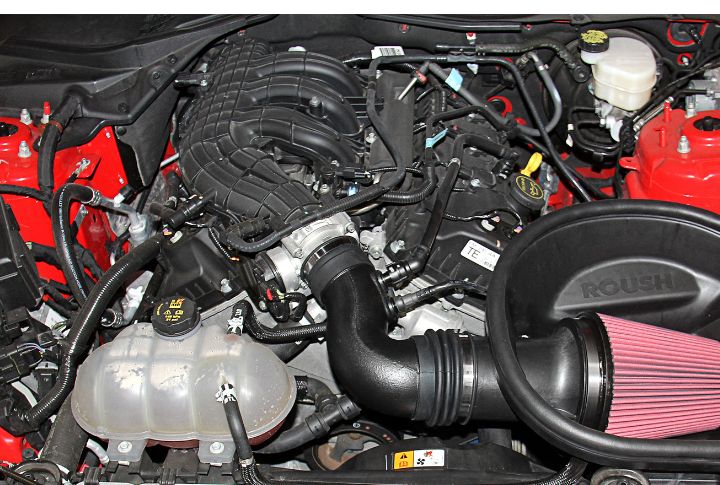
Do Cold Air Intakes Really Boost Your Car’s Performance?

Cold air intakes are a hot topic in the automotive world, often touted as a simple yet effective way to enhance your car’s power and efficiency. But do they live up to the hype? Let’s cut through the noise and explore the science behind cold air intakes, their impact on engine performance, and the key factors you should consider before making a purchase. Here’s everything you need to know.
Improved Engine Performance

Cold air intakes increase the amount of oxygen available for combustion by drawing cooler air from outside the engine bay. Cooler air is denser than warm air and contains more oxygen molecules, which can cause better combustion efficiency and improved engine performance. However, the extent of performance improvement can vary depending on the vehicle and the specific cold air intake system used.
Potential for Increased Fuel Efficiency

One of the often-claimed benefits of cold air intakes is increased fuel efficiency. These systems can make the engine run efficiently by improving the engine’s combustion process with cooler, oxygen-rich air. In theory, this should translate to better fuel economy, but the result can be minimal and depends on driving conditions such as driving styles, traffic, and trip length.
Enhanced Engine Sound

Many car enthusiasts appreciate the enhanced engine sound from installing a cold air intake. The increased airflow and lower restrictions often result in a deeper, more throaty engine note. However, not everyone will appreciate the noise, which may be annoying during long drives or daily commuting.
Possible Engine Damage Risks

Cold air systems place the air filter in the lower part of the engine bay to draw in cooler air. This position can also make it more susceptible to drawing in water, resulting in hydro lock, where water fills the combustion chamber and prevents the engine from running. To mitigate this risk, users should choose systems with a bypass valve or water-resistant features.
Maintenance and Air Filter Cleaning

Cold air intakes typically require more frequent maintenance than stock air intake systems. The aftermarket air filters used in these systems are often reusable and should be cleaned and oiled regularly to maintain optimal performance. Strictly following the manufacturer’s instructions is crucial, as neglecting maintenance can reduce airflow and damage the engine.
Compatibility with Vehicle Electronics

Before installing a cold air intake, ensure the system is specifically designed for your vehicle model. Modern vehicles have complex electronic systems that manage various aspects of engine performance. Incorrect installation or using an incompatible unit can interfere with the mass airflow sensor (MAF) and the engine control unit (ECU).
Warranty Considerations

Car manufacturers often stipulate that modifications to the engine or other vital components can invalidate the warranty, leaving you responsible for the repairs or damage that may occur. Review your vehicle’s warranty terms and consult with the manufacturer or dealership before installing a cold air intake.
Cold Weather Performance

The intake system could become increasingly prone to icing, restricting airflow and negatively impacting engine performance. Using cold air intake systems designed with anti-freeze properties, such as heated air filters or intake pipes, mitigates the issue. Additionally, drivers in cold climates should regularly inspect their engines to keep their intake systems free of ice and debris.
Impact on Emissions

By altering the air-fuel mixture and improving combustion efficiency, these systems can potentially reduce harmful emissions. However, the influence on emissions can vary depending on the specific design of the cold air intake and the vehicle it’s installed on. Cold air intakes are still banned in certain regions due to emissions regulations.
Installation Challenges

Installing a cold air intake is quite a simple process for those with basic mechanical skills, but it can present challenges for those inexperienced with car modifications. The installation involves replacing the stock air intake system with the cold air intake alternative. Incorrect installation could lead to air leaks, poor fitment, or even damage to the engine.
Longevity and Durability

High-quality systems made from durable materials such as stainless steel or aluminum can last many years and withstand the rigors of daily driving. Cheaper systems made from inferior materials may wear out more quickly and require replacement. Proper maintenance and care also influence the system’s longevity.
Potential for Increased Engine Wear

While cold air intakes might improve performance, they could also increase engine wear. The boosted airflow may introduce dirt and debris into the engine if the air filter is not regularly cleaned and maintained. This contamination can lead to more engine wear and potentially costly repairs. To prevent this, choose a cold air intake system with a high-quality air filter.
Customization and Aesthetics

Many cold air intake systems feature polished or powder-coated finishes and may be customized to match your vehicle’s aesthetic. However, the focus on aesthetics should not come at the expense of functionality and reliability. Balancing aesthetics with performance can help you achieve a reliable and visually appealing modification.
Resale Value Impact

Modifying a vehicle with aftermarket parts like cold air intakes could positively or negatively affect its resale value. Some buyers consider performance modifications a selling point and may be willing to pay a premium for a vehicle modified with high-quality parts. Others may worry about reliability, warranty status, and the quality of the installation.
Legal and Regulatory Considerations

Before modifying your vehicle, research and understand the legal implications of installing a cold air intake in your area. In certain regions with strict emissions testing and vehicle modification laws, specific vehicle modifications may not comply with environmental regulations. These violations might cause fines or the need to revert to the stock intake system.


